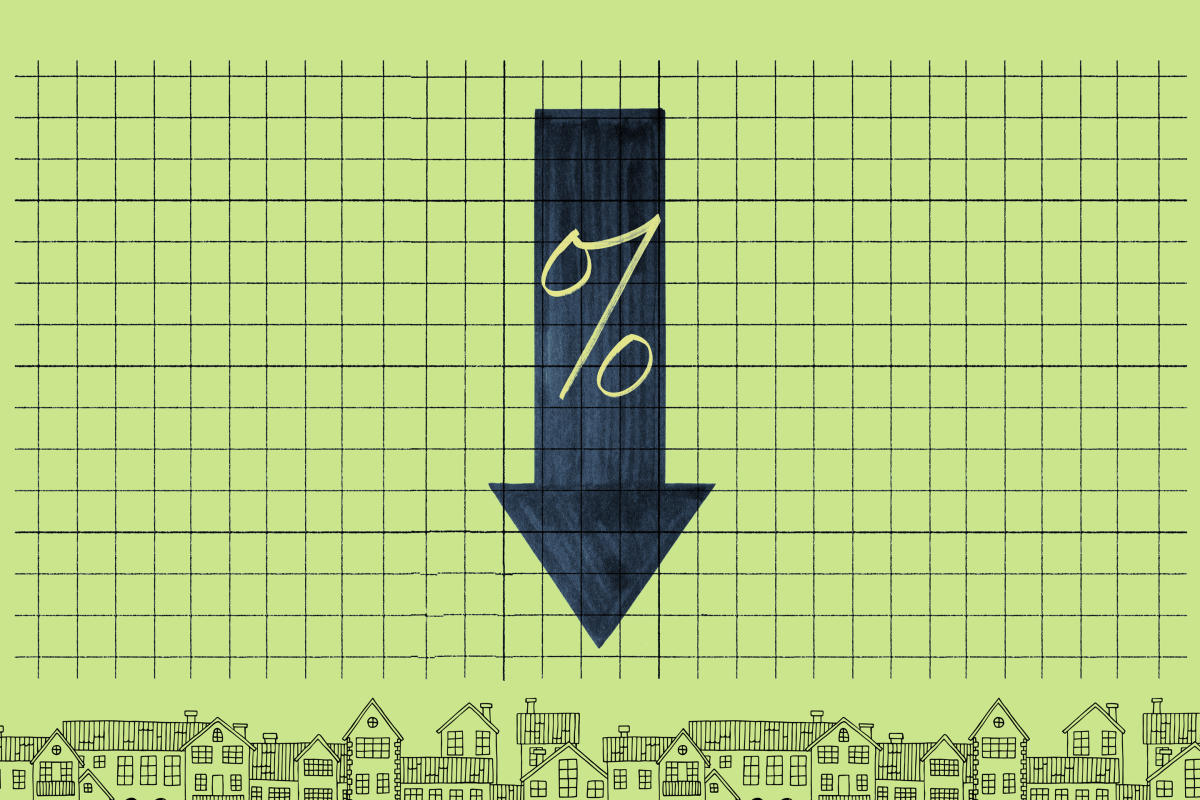Personal Finance
Mortgage Rates Finally Ease Lower: Freddie Mac

It’s not a lot, but it’s still welcome relief for homebuyers. After five weeks of steady increases, mortgage rates moved slightly lower this week, as a result of the turmoil in the banking sector and the stock market.
As was widely expected, the rate on a 30-year fixed-rate loan dropped — to 6.60% for the week ending March 16, according to Freddie Mac. The new average rate represents a 0.13 percentage point reduction from a week ago. Rates were also lower for the 15-year fixed-rate loan, decreasing by 0.05 percentage points to 5.90%.
How big a break this is for those who are shopping for a mortgage isn’t yet clear, however. Whether today’s decrease in rates marks the start of a longer-lasting trend is an open question. Also, some analysts say the financial tumult that prompted the rate cuts might hurt lenders in another way if it results in nervous lenders tightening their criteria for approving a loan.
The rate drops are seen as the result of a chain of developments in recent days. The collapse of Silicon Valley Bank and Signature Bank last week sparked concerns of a contagion of failures among smaller regional banks. That fear pushed investors out of banking stocks and toward safer assets like the 10-year Treasury note. This, in turn, caused yields on the 10-year note to drop, which pulled mortgage rates down as well.
While the developments may have hurt many Americans as investors, they gave a potential boost to borrowers. “Turbulence in the financial markets is putting significant downward pressure on rates,” said Freddie Mac’s chief economist, Sam Khater. Lower rates should benefit borrowers over the short term, he added.
Khater also says this is an especially important time in which to comparison shop for a mortgage. He points out that when rates are volatile, with frequent ups and downs, as has been the case lately, lenders may differ more widely than usual in the rates they offer. Shopping around for a lender can result in annual savings of between $600 and $1,200, he estimates.
For now, rates are lower, which could give well-qualified buyers a push toward a home purchase during what is typically the busiest time of year for the housing market. That said, ongoing signs of weakness in the banking sector and the economy could also cause potential buyers to hold off until the economy becomes more stable.
Economic uncertainty clouds the Federal Reserve’s path forward
This week’s rate reductions focus even-greater attention on future interest-rate moves by the Federal Reserve. As recently as last week, market analysts were expecting the Fed to be a little more aggressive in its stance against inflation, and perhaps raise rates sharply at its next meeting. Now, that move is far from certain.
“Federal Reserve Chair Jerome Powell had indicated in his remarks to Congress that the next rate hikes could be higher than what investors were anticipating,” said Orphe Divounguy, senior macroeconomist at listing site Zillow, in a statement. “But the sudden collapse of two major banks may have given the Fed a major reason to reconsider,” Divounguy added.
Prior to last Wednesday, market observers had been anticipating the announcement of a 0.50 percentage point hike in the federal funds rate at the Fed’s meeting next week. Now, some analysts see an increasing chance the Fed will raise rates by only 0.25 percentage points, according to CME Group’s Fed Watch Tool. Others think the Fed will actually pause its rate hike plans until there’s a clearer picture of the health of the banking sector.
Either way, some experts believe the uncertainty caused by the bank closures could cause financial institutions to tighten their lending standards, which would lead to a slowdown in economic activity and apply disinflationary pressure on the economy.
Aside from the upheaval in banking, other economic indicators pointed to easing inflation as well, adding weight to expectations for a lower rate hike next week.
Tuesday’s Consumer Price Index report showed that inflation had eased in February. Inflation increased by 0.4% month over month, and by 6% over the last 12 months. Both numbers were in line with market forecasts and were seen as an indication that January’s higher-than-anticipated inflation numbers could have been a temporary blip.
Other federal price data released this week furthered that impression. On Wednesday, the U.S. Labor Department released numbers showing that wholesale prices posted an unexpected 0.1% decline last month; analysts had been anticipating a 0.3% increase instead. In a separate report, the Commerce Department reported a 0.4% decline in retail sales as well.
Taken as a whole, all this data could be enough for the Federal Reserve to change — or at least moderate — its expected course toward higher interest rates.
More from Money:
Best Mortgage Lenders of 2023
Mortgage Calculator by Money
How to Get the Lowest Mortgage Rate: A Step-by-Step Guide
© Copyright 2023 Money Group, LLC. All Rights Reserved.
This article originally appeared on Money.com and may contain affiliate links for which Money receives compensation. Opinions expressed in this article are the author’s alone, not those of a third-party entity, and have not been reviewed, approved, or otherwise endorsed. Offers may be subject to change without notice. For more information, read Money’s full disclaimer.
Read the full article here

-

 Personal Finance7 days ago
Personal Finance7 days agoGas prices drop as demand for driving fizzles out: AAA
-

 Investing7 days ago
Investing7 days agoCrowdstrike CEO Responds to Causing Largest IT Outage in History
-

 Side Hustles6 days ago
Side Hustles6 days agoHow to Build A Startup, From an Early Lyft, Twitch Investor
-

 Passive Income7 days ago
Passive Income7 days agoThe Top 5 AI Tools That Can Revolutionize Your Workflow and Boost Productivity
-

 Passive Income5 days ago
Passive Income5 days agoNLRB Drops Expanded Joint Employer Appeal
-

 Side Hustles6 days ago
Side Hustles6 days agoJake Paul: Mindset Hacks, Mike Tyson Fight, Embracing Fear
-

 Investing7 days ago
Investing7 days agoBoeing to supply E-7 in first major win since plea deal By Reuters
-

 Side Hustles5 days ago
Side Hustles5 days ago10 Effective Growth Marketing Strategies for Your Startup


















